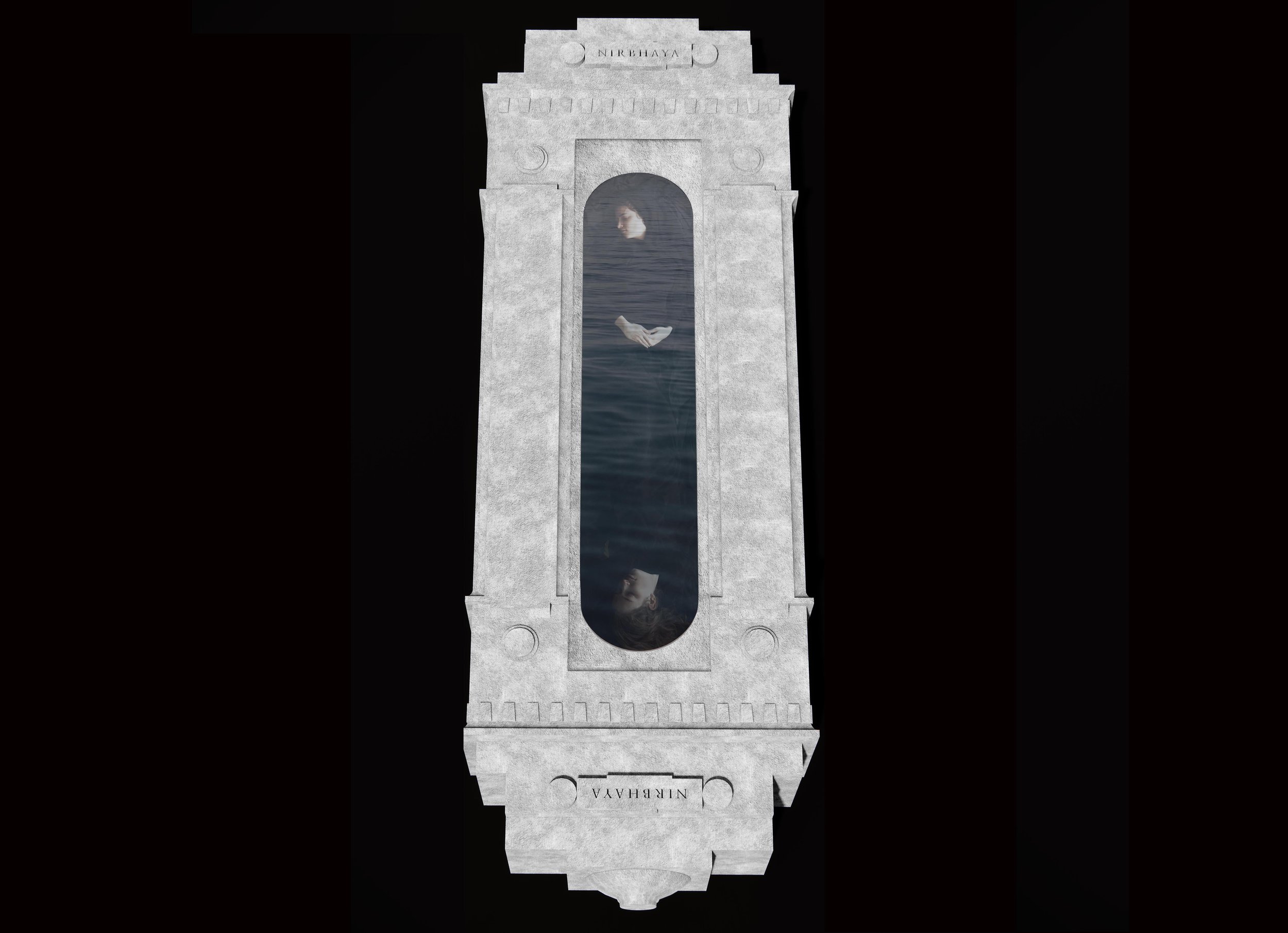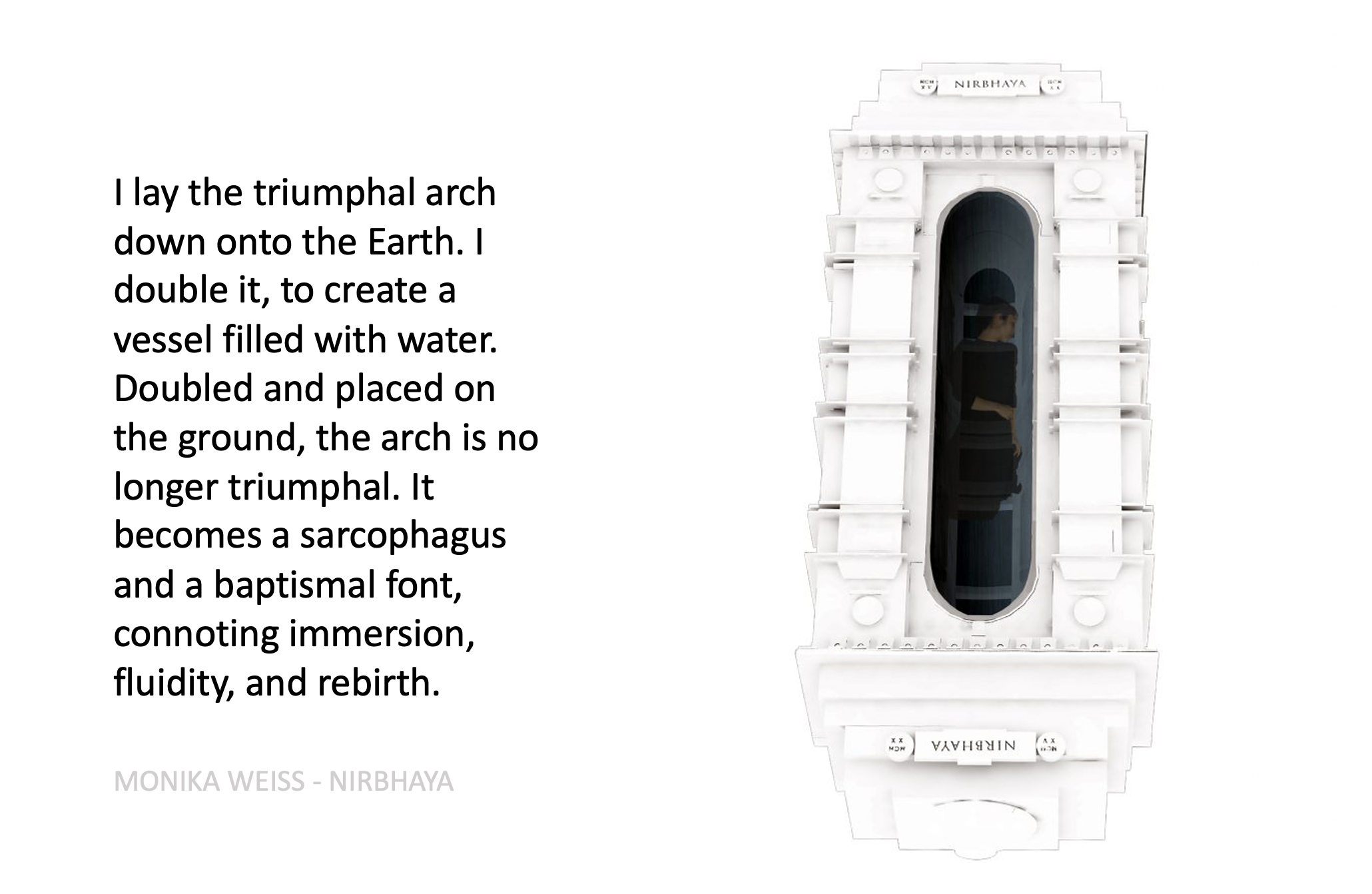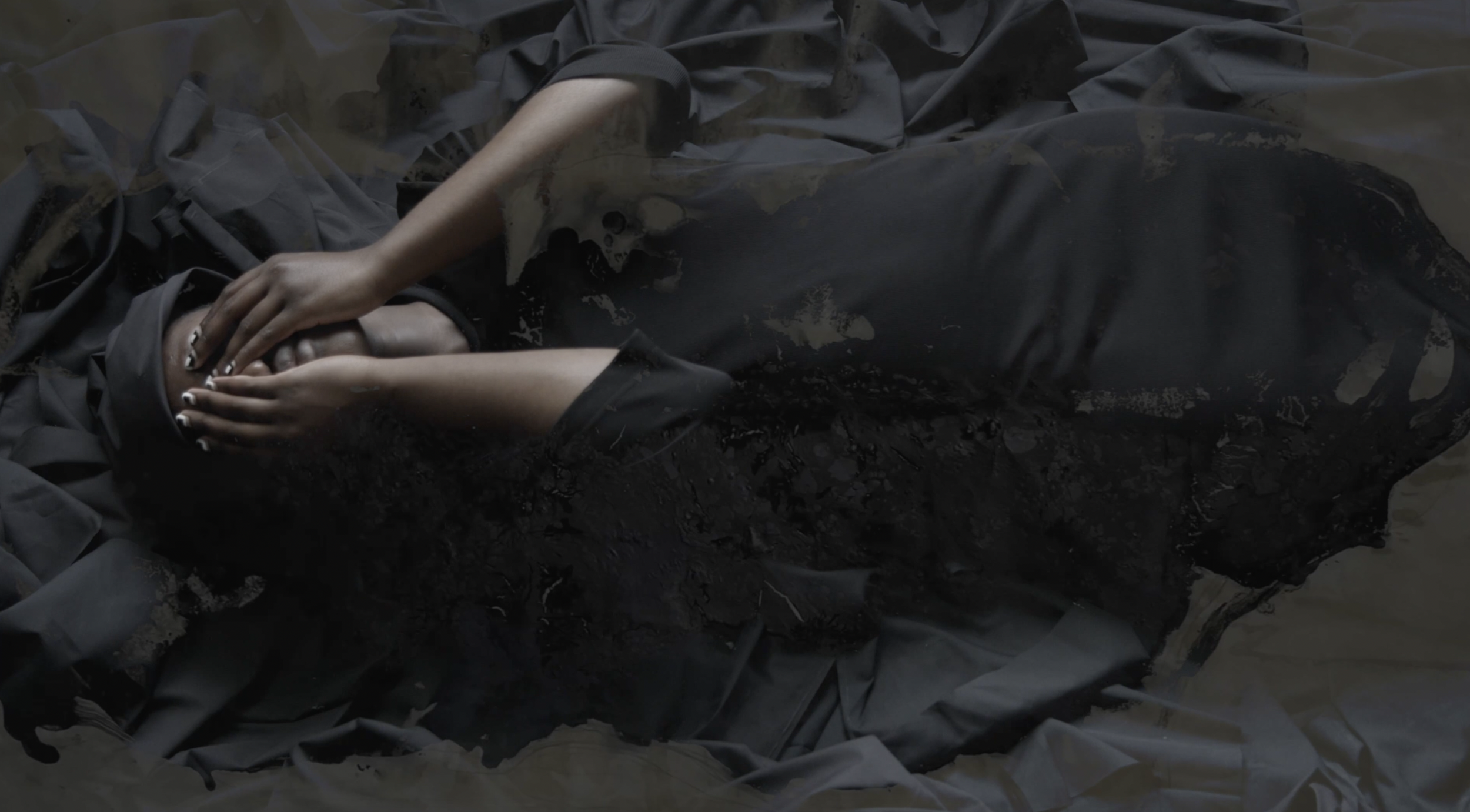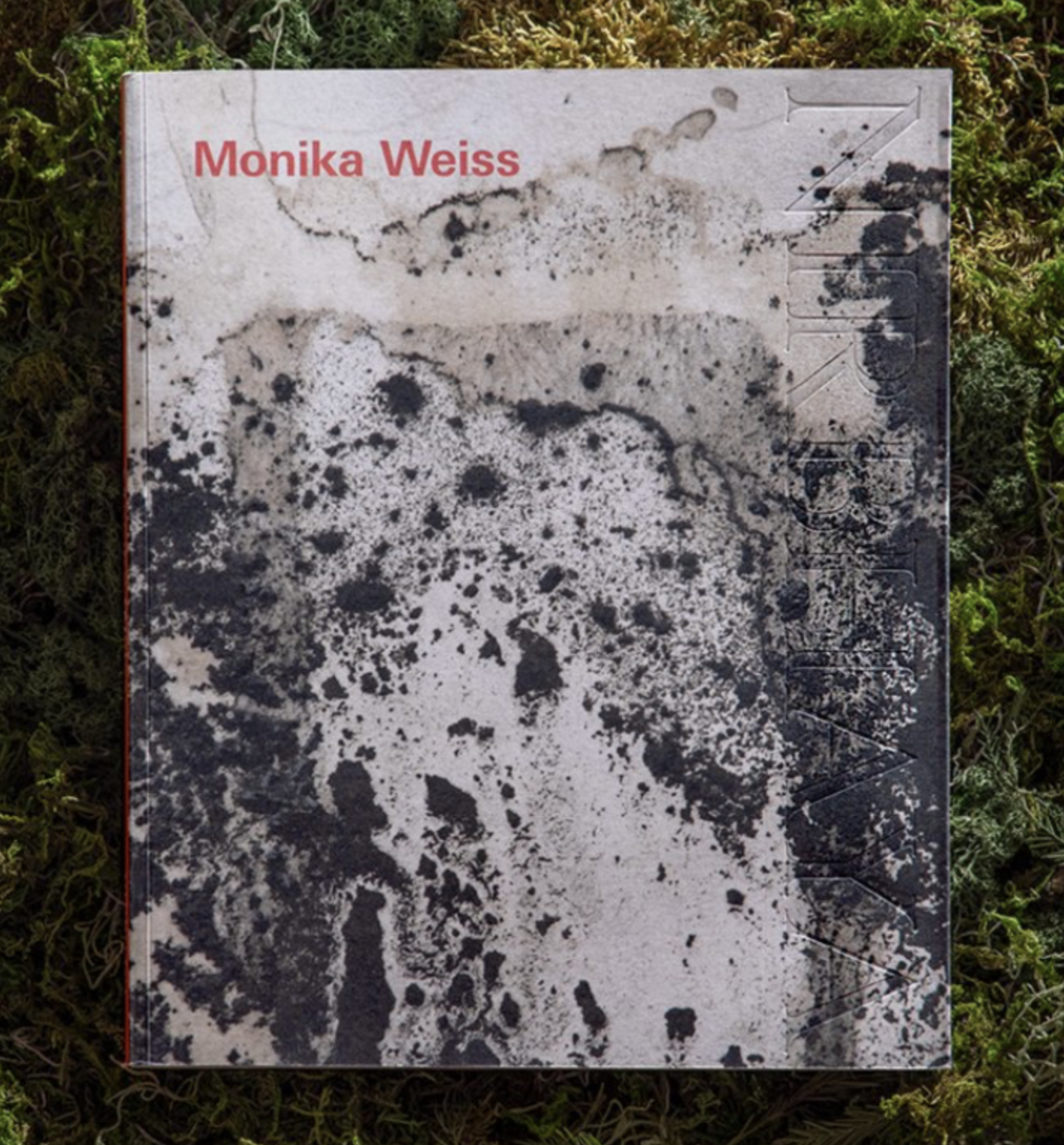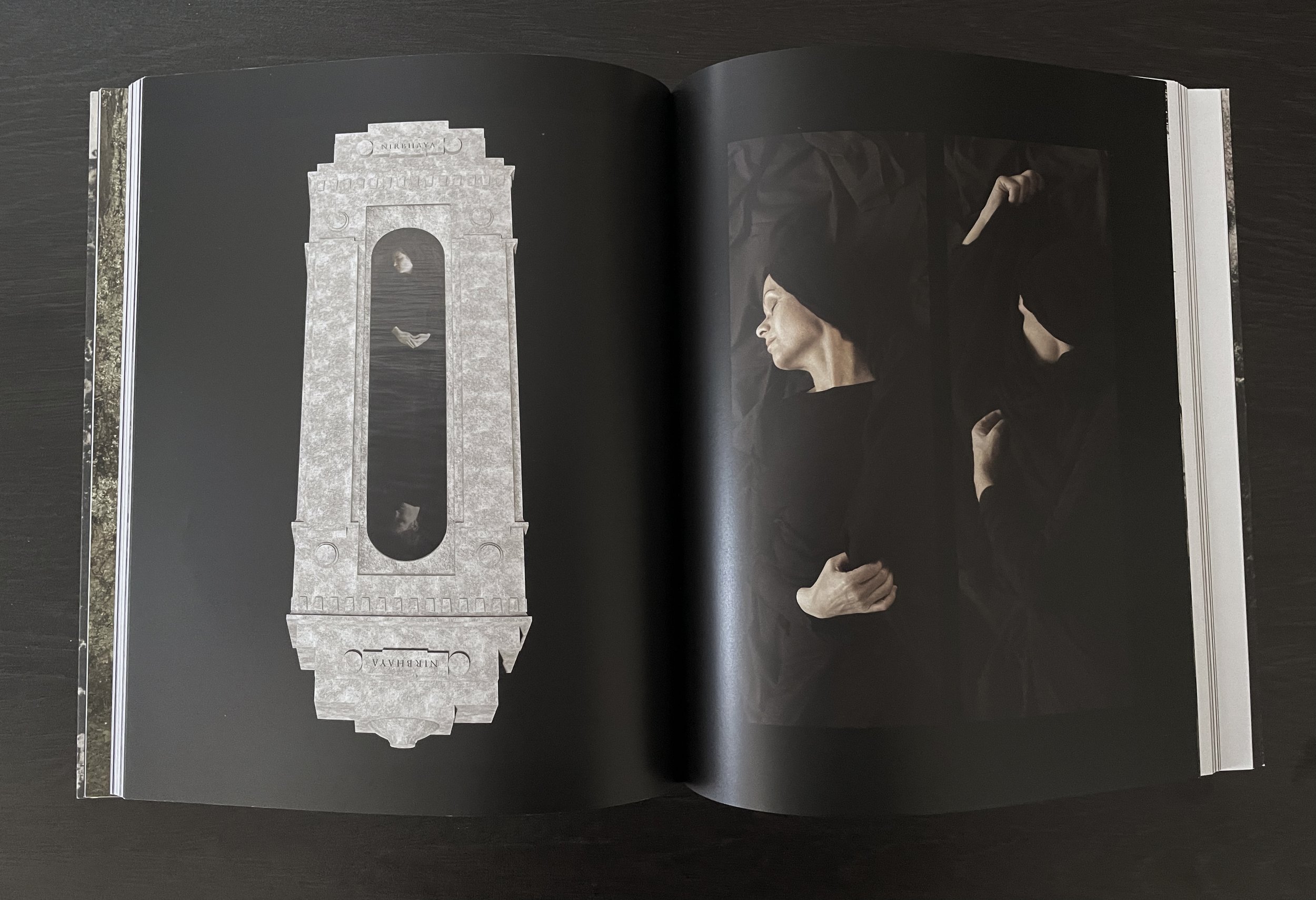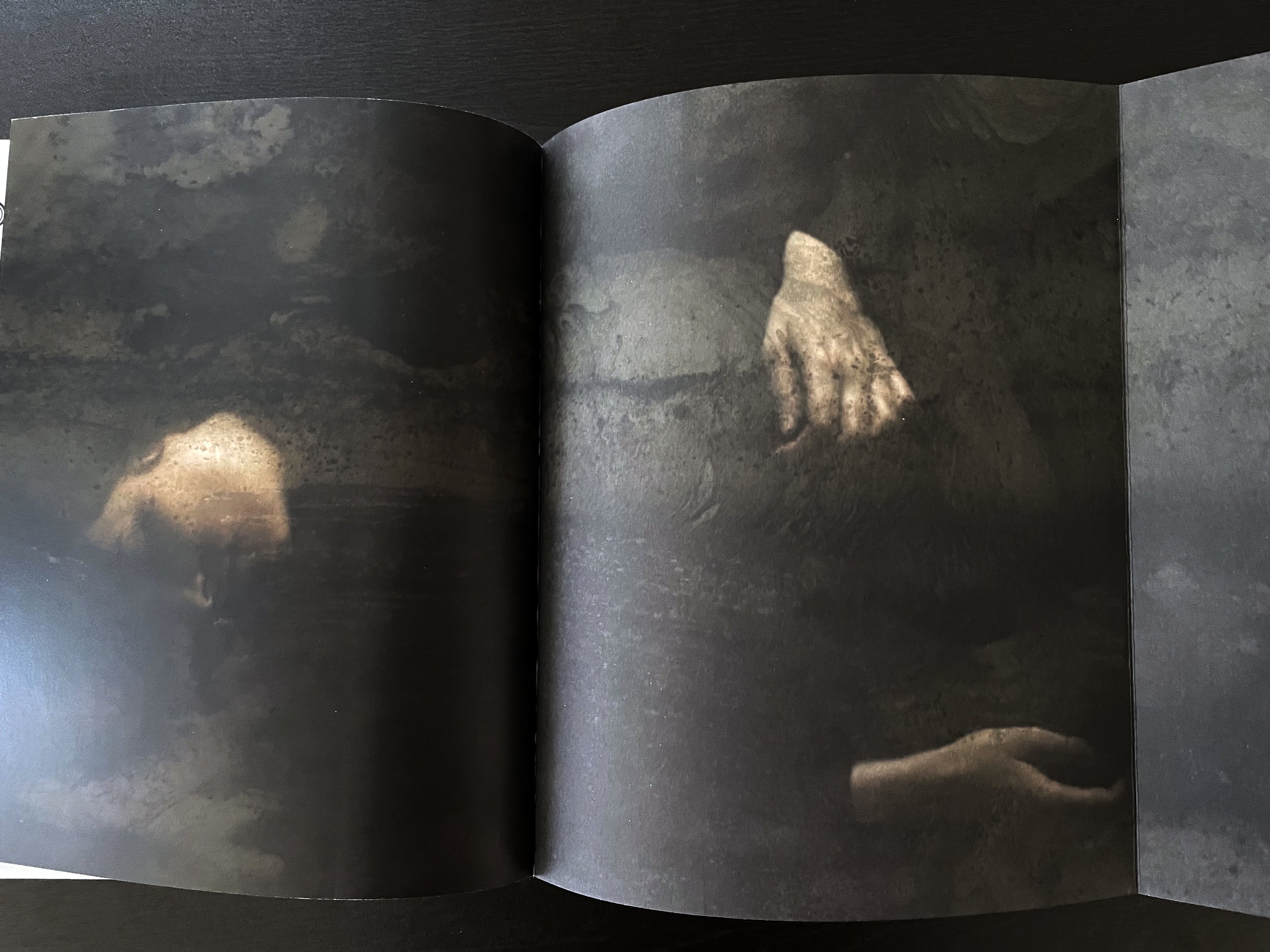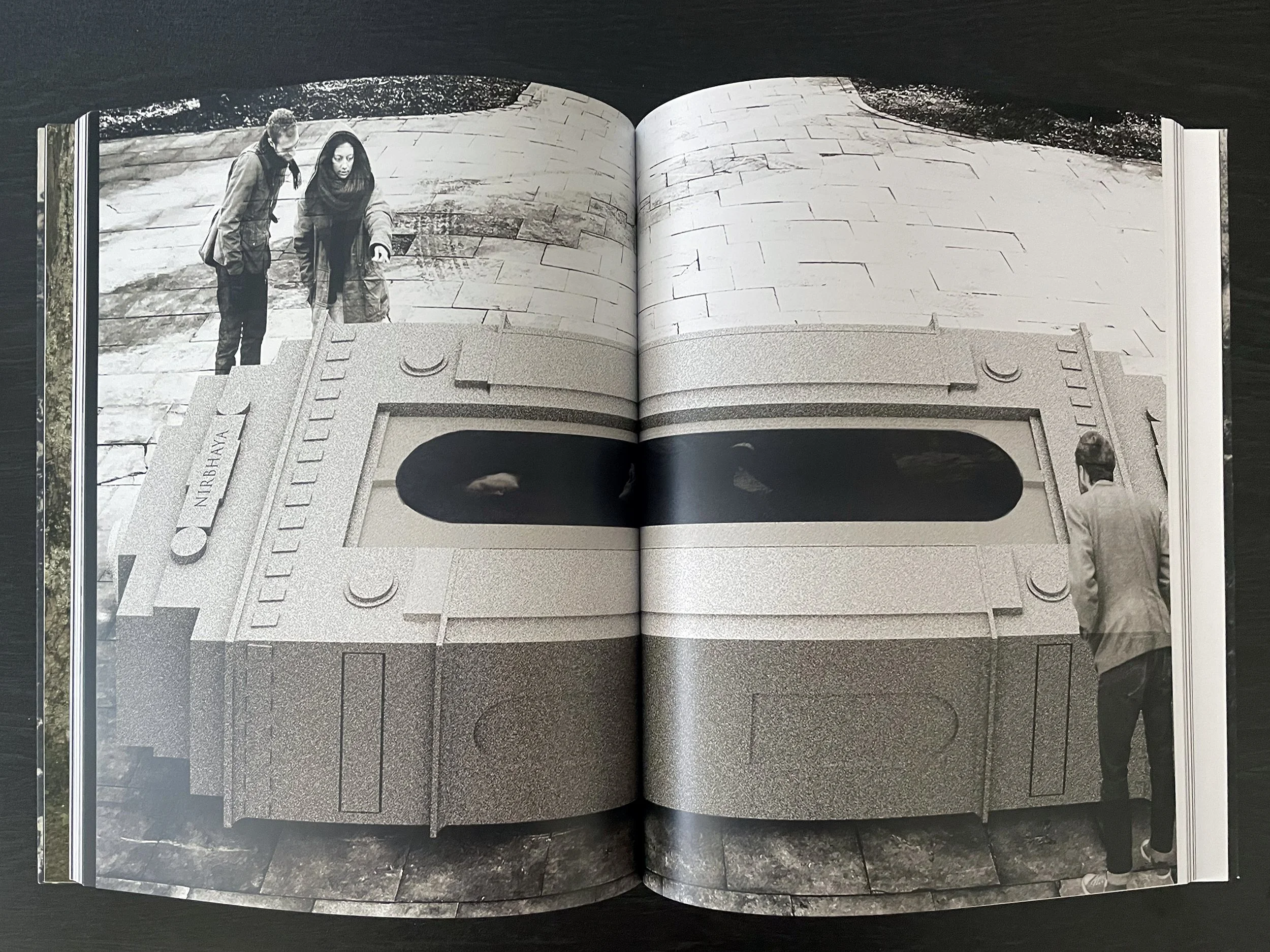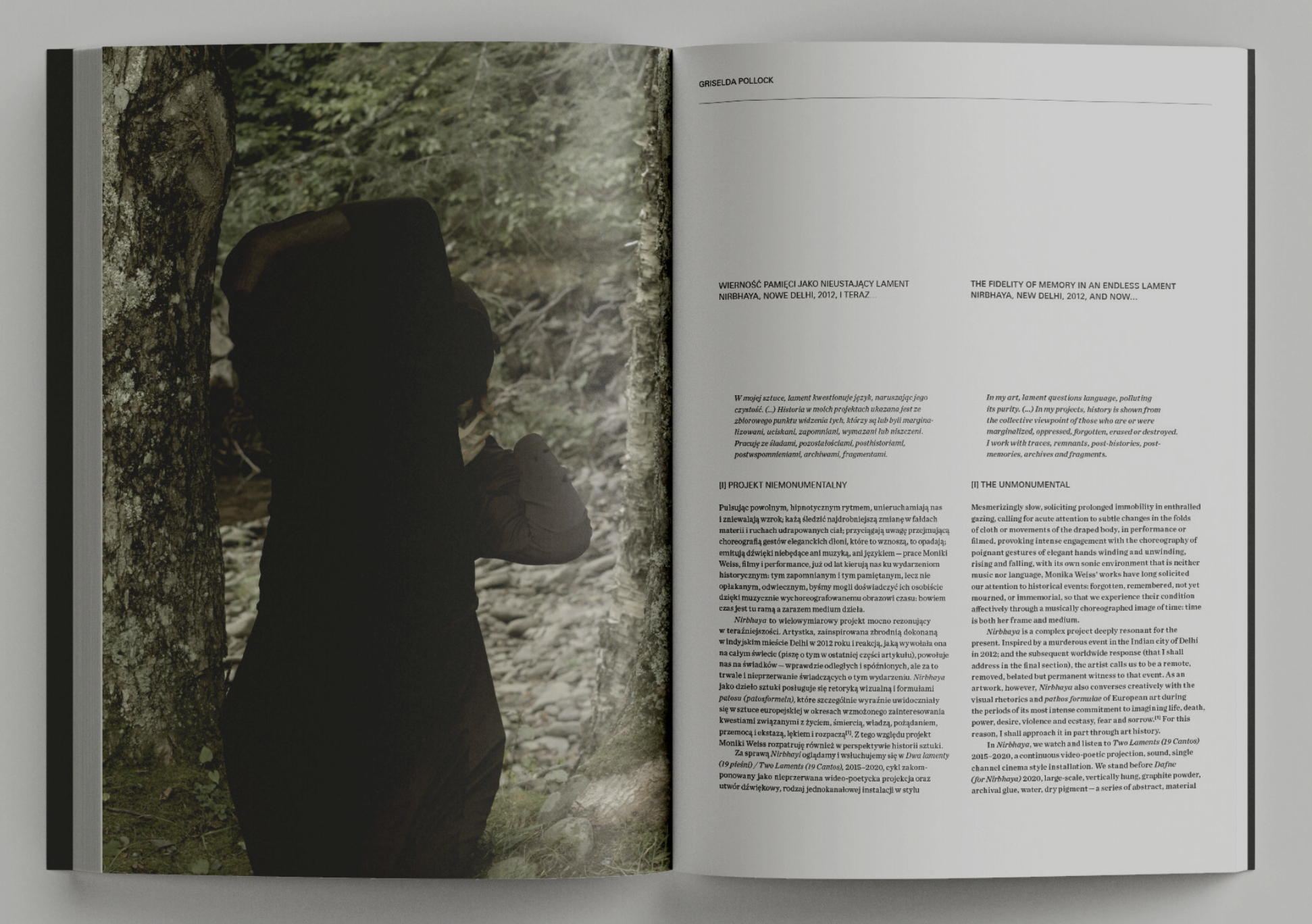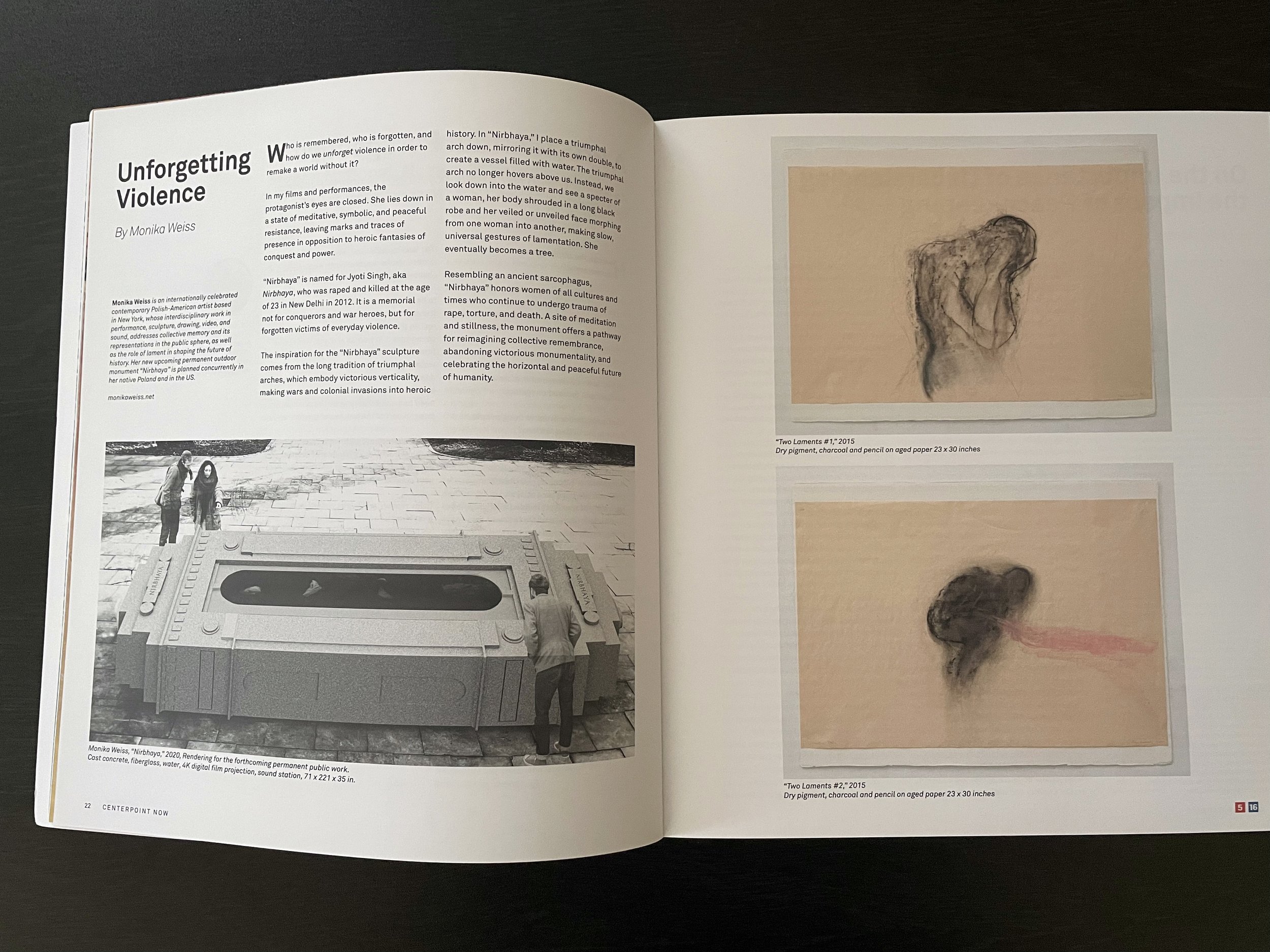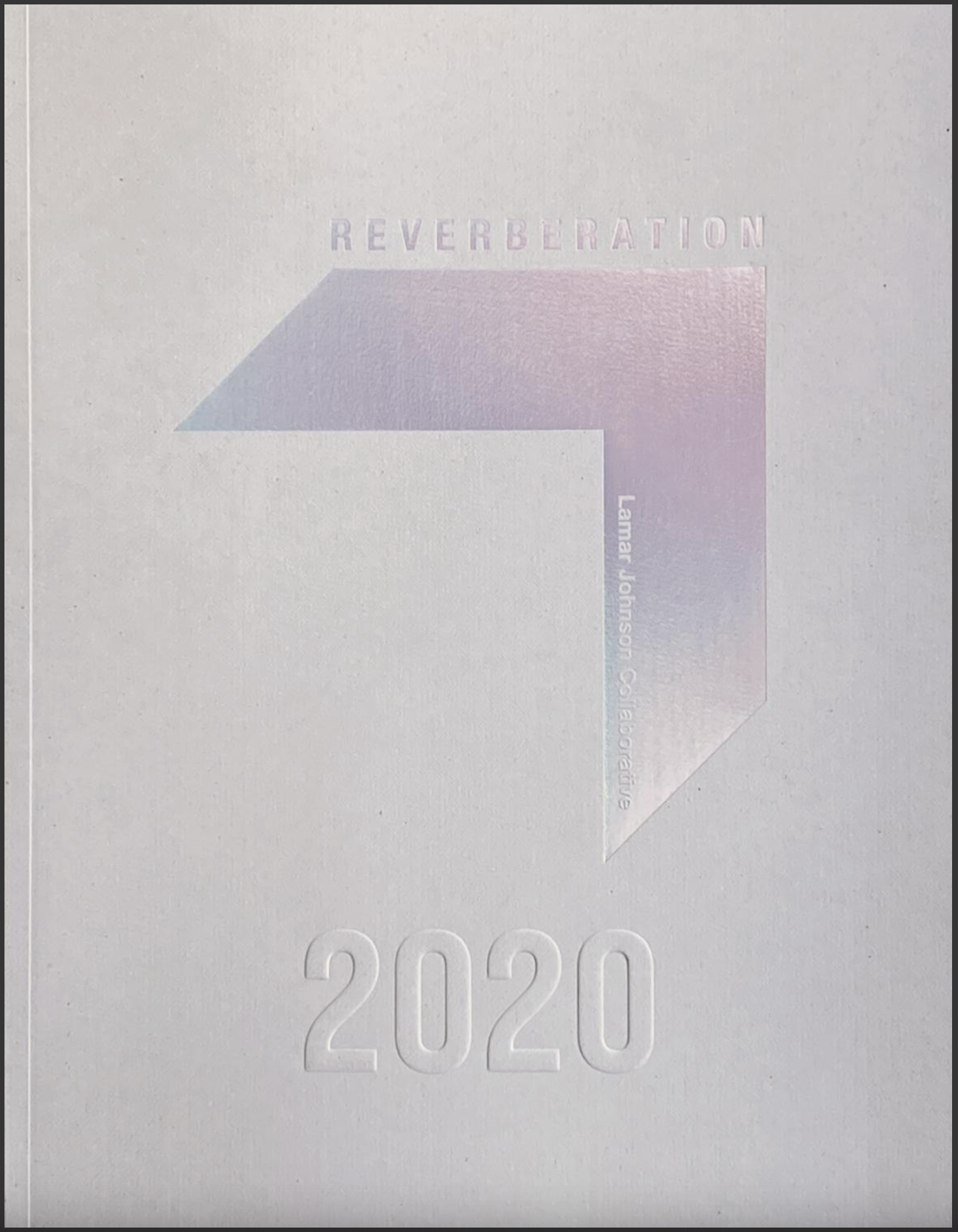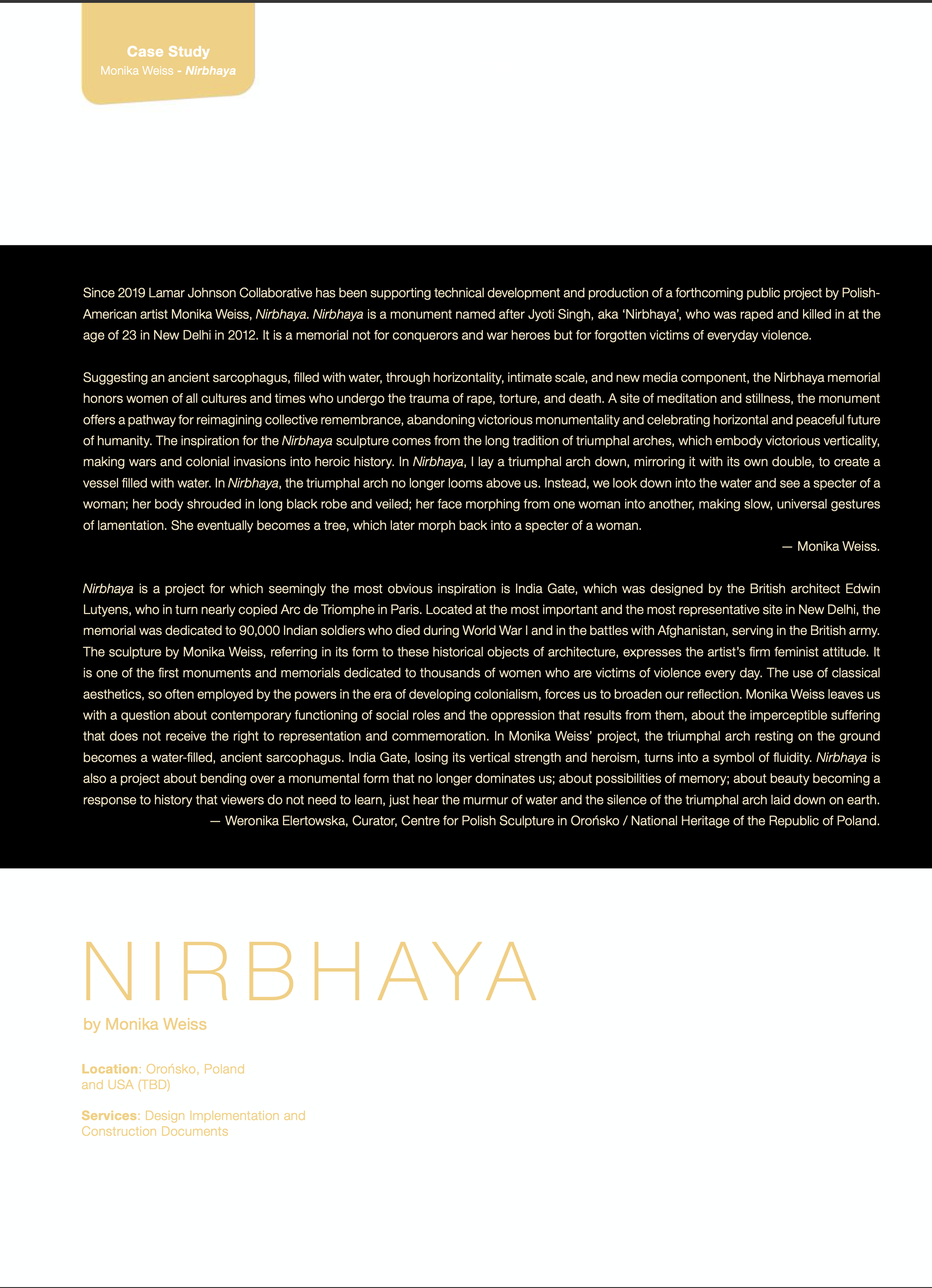nirbhaya monument/antimonument
Nirbhaya, rendering of the forthcoming long-term public project at Dag Hammarskjold Plaza, near United Nations in New York. A sister version of the project is planned to be installed as part of the permanent collection and sculpture park at the Centre of Polish Sculpture in Orońsko
N I R B H A Y A
monument | antimonument
stone, fiberglass, water, digital film, sound
approximate sculpture dimensions: 6’ x 17’ x 3’
Artist Statement
As an artist, through my public project Nirbhaya, I ask:
Who is remembered and who is forgotten?
How do we unforget violence in order to reimagine a world without it?
Nirbhaya is a place of meditation and silence, offering a way to reimagine collective memory and to abandon victorious and vertical monumentality, towards horizontal and peaceful future of humanity. I created Nirbhaya both as a monument and as an antimonument. Nirbhaya is a memorial devoted not to conquerors and war heroes but to forgotten victims of gender-based violence, who continue to be tortured, raped and killed around the world.
I named this work Nirbhaya in honor of Jyoti Singh, who at the age of 23 was gang-raped and murdered in 2012 in New Delhi. Inhabitants of India posthumously named her „Nirbhaya” („Fearless”). In my project Nirbhaya becomes a name shared by all women who perish everyday in the ongoing war waged against them everywhere on Earth.
Support from my dear friend, Indian poet Meena Alexander (1951–2018) was invaluable in terms of my understanding of what has happened to Jyoti Singh as well as the cultural and social consequences of what my artistic response to this event may mean. Passages from our transcribed dialogue appear in the newest monograph on my work. Ideas about trauma, healing, transformation, of which we spoke, are foregrounding this project which I since developed.
The inspiration for the Nirbhaya sculpture is a long-term tradition of triumphal arches which embody victorious verticality, while making wars and colonial invasions into heroic history, and forgetting about the unimaginable violence and suffering of innocent victims.
In Nirbhaya, I critique the symbolism of all triumphal arches, focusing on one example of an arch, India Gate, itself a copy of the Arc de triomphe in Paris, imposed on the colonized land by the British empire. I lay the triumphal arch down onto the Earth. I double it, to create a vessel filled with water. Doubled and placed on the ground, the arch is no longer triumphal. It becomes a sarcophagus and a baptismal font, connoting immersion, fluidity, and rebirth.
Triumphal arch does not hover above us anymore. Instead, we bend down towards the water filling the vessel/sarcophagus. There, inside the sculpture, we see an underwater projection of a moving image showing a figure of a woman. She is covered with a long dress and veil. She seems to be immersed in the water and in the sarcophagus.
Inside the Nirbhaya sculpture, viewers notice a woman who is seemingly immersed in the water, thanks to an underwater projection. The protagonist is gradually morphing from one woman into next. Silent gestures of lamentation are enacted in many iterations by women form around the world, whom I filmed in my Brooklyn studio. Composed of two different time sequences combined together, the moving image – which we see in the water filling the sculpture – represents two women at all times, who seem to be connected by their hip area, the site of trauma. From time to time, we see the same woman represented twice, symbolizing double presence, suggesting togetherness, as well as rebirth.
Incorporating resin, graphite powder and water, I created a series of life size drawings from abstract stains and layers of pigment. Referring to the myth of Daphne I wanted to visually represent the moment in which her skin becomes a tree bark, the process of reincarnation into a new life form. Inspired by the myth of Daphne, who self-transformed into a tree to escape rape, in this work I represent her metamorphosis by focusing on the tree trunk and the tree bark. Thanks to film montage, my abstract drawings representing tree bark, appear in the underwater projection as if merging with women’s bodies. As the female figure gradually transforms from one woman into the next, from time to time she also, symbolically, becomes a tree.
Nirbhaya Projections, 2020-2023, still from 4K digital film, duration variable
Dafne (for Nirbhaya), 2020, cycle of 12 large-scale studio drawings which appear as part of film montage in the underwater projection
While the sculpture and the underwater film projection are silent, an important element of Nirbhaya is music. I have composed several live vocal and choreography performances which are meditative and without words or instrumentation. The performances will take place around the sculpture several times during the exhibition.
In addition to writing vocal music performed acoustically several times during the exhibition near the sculpture, I have also created an online sound composition, which will be accessible at any time and from any location, including via a barcode placed near the sculpture. Through sound and music, I hope to offer a form of sonification of public memory. Through the inclusion of music, water, and film projection, this work highlights the relevance of public memory as a living environment.
Nirbhaya, rendering of the forthcoming public project at Dag Hammarskjold Plaza with live vocal performances taking places several times during the long-term exhibition
USA LOCATION
My public project Nirbhaya is organized in cooperation with New York City Parks’ Art in the Parks program, World Council of Peoples for the United Nations, and the Streaming Museum.
Offering to New York audiences a site of beauty and peacefulness, the message of Nirbhaya closely relates to the fifth goal of the United Nations, which is gender equality and human rights. It is important to witness this work now because violence against women is only increasing. A place of public demonstrations against violations of human rights and environmental rights, Dag Hammarskjold Plaza, located near UN, guarantees a significant context and visibility to the Nirbhaya project.
Nirbhaya marks a completion of several years of technical research and development of the project in the context of the New York City space. Technical aspects of Nirbhaya are a result of my intense work with a team of architects at Lamar Johnson Collaborative as well as numerous consultations with experts in technology and engineering, as well as city officials, including more notably, Rick Bell, former Executive Director of Excellence in Design and Construction, New York City Department of Design and Construction as well as Victor Calise, former Commissioner of the New York City Mayor’s Office for People with Disabilities.
At Dag Hammarskjold Plaza Monika Weiss - Nirbhaya is curated by Izabela Gola, independent curator and Visual Arts and Design Curator, Polish Cultural Institute New York. Monika Weiss - Nirbhaya is hosted at DHP by Sherrill Kazan, President, World Council of Peoples for the United Nations and President, Friend of Dag Hammarskjold Plaza. Nirbhaya is made possible by the New York State Council on the Arts with the support of the Office of the Governor and the New York State Legislature. Since 2019 Lamar Johnson Collaborative has been overseeing technical development of Monika Weiss’ Nirbhaya. Nirbhaya is a fiscally sponsored project of New York Foundation for the Arts.
Nirbhaya by Monika Weiss Advisory Board is an evolving international group of cultural leaders who support the project and its message.
FUNDRAISING
Since 2019, New York Foundation for the Arts (NYFA) has generously offered fiscal sponsorship in support of the fundraising campaign for Nirbhaya project internationally.
PUBLICATIONS
In 2019, Eulalia Domanowska and Marta Smolińska invited me to discuss Nirbhaya as part of a publication Sculpture Today IV (ANTI-monument. Non- traditional forms of commemoration, Centre of Polish Sculpture in Orońsko.
In 2020 Nina Colosi, Sherril Kazan and Shamina de Gonzaga invited me to present Nirbhaya in CenterpointNow, published by World Council of Peoples for the United Nations in collaboration with Streaming Museum. This issue marked 75th anniversary of the United Nations.
In 2021, the Minister of Culture of the Republic of Poland proposed my project Nirbhaya for Dag Hammarskjold Plaza (DHP) located across from the UN headquarters in New York. The plaza is managed by New York City Parks, Friends of DHP and the World Council of People for United Nations. The proposal was approved in late 2022. Previous Polish artist exhibited at DHP plaza was Magdalena Abakanowicz in 2014.
In 2021 Centre for Polish Sculpture in Orońsko published a monograph Monika Weiss – Nirbhaya, including the esteemed feminist art historian Griselda Pollock, The Metropolitan Museum of Art curator Mark McDonald, and a conversation between myself and poet Meena Alexander, among several other texts.
In 2021, Centre for Architecture St Louis CEL, organized an interdisciplinary symposium composed of 6 panel discussions, Monument|Anti-Monument, inspired by my work Nirbhaya. The symposium consisted of six virtual panel discussions moderated by NYC architect Rick Bell and hosted by CEL director Jasmin Aber. Each panel included myself as well several of the following speakers: Michael Arad, Lance Jay Brown, Nina Colosi, Chip Crawford, Eulalia Domanowska, Weronika Elertowska, Wendy Evans Joseph, Katarzyna Falęcka, Vanessa Gravenor, Percy Green, Marianne Hirsch, Lynne Jackson, Walter Johnson, David Lelyveld, Mark McDonald, Tyler Meyr, Gwen Moore, Eric Mumford, Verity Platt, Griselda Pollock, Leila Sadat, Kamala Sankaram, Jeffrey Smith, Buzz Spector, Julia Walker, Krzysztof Wodiczko, and James E. Young.
In 2022 Eulalia Domanowska invited me to present my writing about Nirbhaya in the publication Traces of Sisterhood, published by Salon Akademii, Warsaw in collaboration with TRACTS (Trace as a research agenda for climate change, technology studies, and social justice)
Mark McDonald, Curator of Drawings and Prints, The Metropolitan Museum of Art, in Monika Weiss-Nirbhaya, Centre of Polish Sculpture in Orońsko, 2021 (click here to read full essay)
Monika Weiss - Nirbhaya, 5:1 maquette, artist studio, 2024
Essay Excerpt
“Mesmerizingly slow, soliciting prolonged immobility in enthralled gazing, calling for acute attention to subtle changes in the folds of cloth or movements of the draped body, in performance or filmed, provoking intense engagement with the choreography of poignant gestures of elegant hands winding and unwinding, rising and falling, with its own sonic environment that is neither music nor language, Monika Weiss’ works have long solicited our attention to historical events: forgotten, remembered, not yet mourned, or immemorial, so that we experience their condition affectively through a musically choreographed image of time: time is both her frame and medium. Nirbhaya is a complex project deeply resonant for the present. Inspired by a murderous event in the Indian city of Delhi in 2012, the artist calls us to be a remote, removed, belated but permanent witness to that event. As an artwork, however, Nirbhaya also converses creatively with the visual rhetorics and pathos formulae of European art during the periods of its most intense commitment to imagining life, death, power, desire, violence and ecstasy, fear and sorrow.”
- Griselda Pollock, art historian and cultural analyst of international, postcolonial feminist studies in visual art and visual culture, in Monika Weiss-Nirbhaya, Centre of Polish Sculpture in Orońsko, 2021 (click here to read full essay)
For more information about Monika Weiss - Nirbhaya publication and to order a copy, click here.
EMA Sessions Visiting Artist Monika Weiss discusses her forthcoming public project Nirbhaya, interviewed by Adam Hogan, Experimental Media Arts, University of Arkansas, 2020
Vanessa Gravenor talks with Monika Weiss about her forthcoming public project Nirbhaya
POLISH LOCATION
Centre of Polish Sculpture in Orońsko will be the permanent location for the monument/antimonument Nirbhaya.
above:Nirbhaya, rendering of the forthcoming permanent project at the Centre of Polish Sculpture in Orońsko
